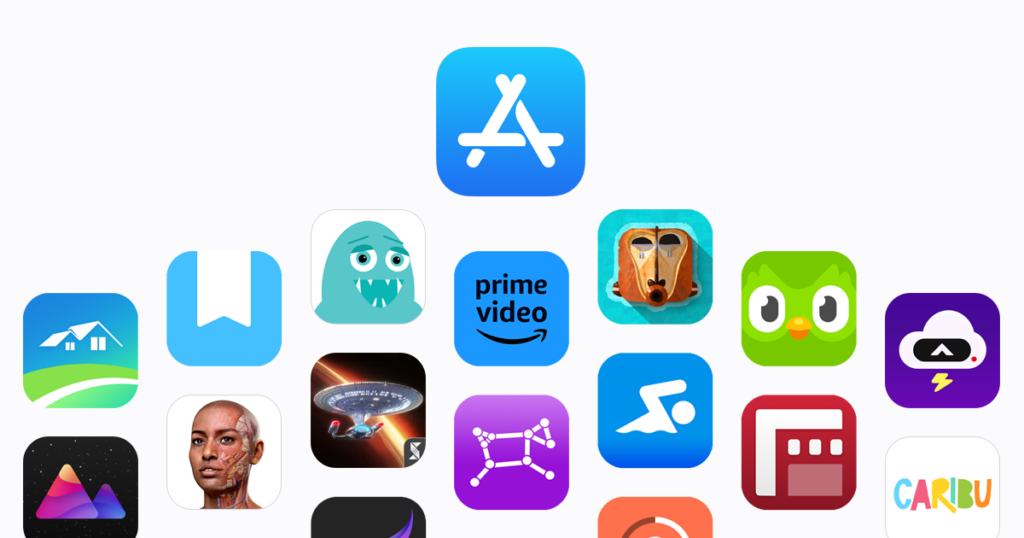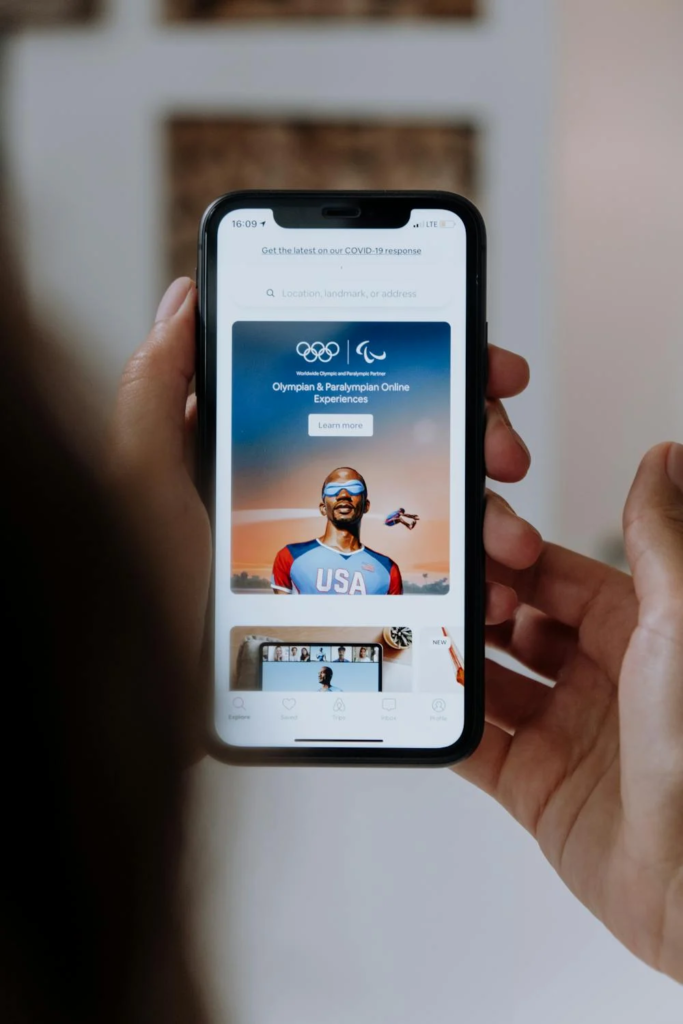Key Takeaways
- Optimize keywords: Conduct thorough keyword research and strategically incorporate relevant keywords into your app description to improve visibility in search results.
- Compelling messaging: Craft concise and persuasive app descriptions that highlight key features and benefits, compelling users to take action and download your app.
- Continuous optimization: Monitor performance metrics, experiment with different approaches, and iterate based on data insights to continually improve your ASO mobile app descriptions and drive conversions.
In the ever-expanding digital landscape, where mobile apps reign supreme, standing out amidst the sea of competitors is a formidable challenge for developers and marketers alike.
With millions of apps vying for users’ attention across various app stores, mastering the art of App Store Optimization (ASO) is no longer just a desirable skill but an absolute necessity for success.

At the heart of ASO lies a crucial element often underestimated or overlooked: the mobile app description. This seemingly innocuous block of text holds immense power, serving as the gateway to attracting and engaging potential users.
Crafting a compelling app description isn’t just about stringing together a few sentences; it’s about understanding the psychology of your target audience, leveraging the right keywords, and employing persuasive language that drives conversions.
In this definitive guide, we delve deep into the intricacies of writing ASO mobile app descriptions that not only boost visibility but also convert casual browsers into enthusiastic users.
Whether you’re a seasoned app developer looking to revamp your marketing strategy or a budding entrepreneur venturing into the world of mobile apps for the first time, this comprehensive resource is your roadmap to unlocking the full potential of your app’s success.
Throughout this journey, we’ll explore the fundamentals of ASO, dissect the anatomy of effective app descriptions, and unveil proven strategies.
From keyword research to content optimization, localization to performance analysis, we leave no stone unturned in our quest to empower you with the knowledge and tools needed to thrive in today’s competitive app ecosystem.
But before we dive into the nitty-gritty details, let’s take a moment to understand why ASO matters now more than ever. With the exponential growth of mobile app usage and the ever-evolving algorithms of app stores, the stakes have never been higher for developers seeking to make their mark in this dynamic landscape.
Join us as we embark on a journey to demystify ASO mobile app descriptions and equip you with the insights and strategies to navigate this complex terrain with confidence.
Whether you’re aiming to skyrocket your app’s downloads, boost revenue, or simply enhance user engagement, the principles outlined in this guide will serve as your compass, guiding you towards sustainable growth and success in the competitive world of mobile apps.
Before we venture further, we like to share who we are and our digital experiences.
About AppLabx
From developing a solid marketing plan to creating compelling content, optimizing for search engines, leveraging social media, and utilizing paid advertising, AppLabx offers a comprehensive suite of digital marketing services designed to drive growth and profitability for your business.
AppLabx is well known for helping companies and startups use ASO to drive traffic to their websites and web apps.
At AppLabx, we understand that no two businesses are alike. That’s why we take a personalized approach to every project, working closely with our clients to understand their unique needs and goals, and developing customized strategies to help them achieve success.
If you need a digital consultation, then send in an inquiry here.
How to Write ASO Mobile App Descriptions That Convert
- Understanding ASO (App Store Optimization)
- The Role of App Descriptions in ASO
- Best Practices for Crafting ASO Mobile App Descriptions
- Measuring and Analyzing Performance
- Future Trends and Considerations
1. Understanding ASO (App Store Optimization)
In today’s hyper-competitive app market, simply having a great app isn’t enough to guarantee success.
App Store Optimization (ASO) is the key to unlocking your app’s full potential by maximizing visibility, increasing downloads, and ultimately driving revenue.
Let’s delve into the fundamentals of ASO and explore how it can elevate your app’s performance in the digital arena.

Definition and Purpose
- Definition: ASO refers to the process of optimizing various elements of your app’s listing on app stores to improve its visibility and ranking in search results.
- Purpose: The primary goal of ASO is to increase the discoverability of your app among potential users, leading to higher organic downloads and improved user engagement.
Key Components of ASO
- Keywords:
- Definition: Keywords are the terms and phrases that users enter into the search bar when looking for apps. Incorporating relevant keywords into your app’s metadata is essential for ranking higher in search results.
- Example: If you have a fitness app, including keywords like “workout,” “fitness tracker,” and “exercise planner” can help attract users searching for these terms.
- App Title:
- Definition: The app title is the name of your app displayed prominently on the app store. It’s crucial to choose a title that not only reflects your app’s core functionality but also contains relevant keywords.
- Example: “RunKeeper – GPS Running Tracker” effectively communicates the app’s purpose while incorporating relevant keywords like “running tracker” and “GPS.”
- Description:
- Definition: The app description provides users with information about your app’s features, benefits, and functionalities. It’s an opportunity to showcase what sets your app apart and convince users to download it.
- Example: A well-crafted description for a meditation app might highlight its guided meditation sessions, stress-relief techniques, and customizable meditation plans, enticing users to prioritize their mental well-being.
- Icon and Screenshots:
- Definition: Visual assets such as app icons and screenshots play a crucial role in attracting users’ attention and conveying the essence of your app. Compelling visuals can significantly impact download rates.
- Example: A travel app’s icon featuring iconic landmarks and screenshots showcasing breathtaking destinations can evoke a sense of wanderlust and entice users to explore further.
- Ratings and Reviews:
- Definition: User ratings and reviews provide social proof of your app’s quality and reliability. Positive reviews and high ratings can instill trust and confidence in potential users, encouraging them to download your app.
- Example: A food delivery app with a high average rating and glowing reviews praising its speedy service and delicious food selection is more likely to attract new users than one with mediocre ratings and negative feedback.
The Role of ASO Mobile App Descriptions
- Why App Descriptions Matter: App descriptions serve as your app’s sales pitch, providing users with a glimpse of what to expect and why they should download it.
- Impact on Search Rankings: Optimizing your app description with relevant keywords can improve its visibility in app store search results, increasing the likelihood of attracting organic traffic.
- Influence on User Engagement and Conversions: A compelling app description can capture users’ interest, address their pain points, and persuade them to take action, resulting in higher conversion rates and improved user retention.
2. The Role of App Descriptions in ASO
Crafting compelling app descriptions is a critical aspect of App Store Optimization (ASO) that can significantly impact the discoverability and success of your app.
Let’s explore the multifaceted role that app descriptions play in ASO and how they contribute to driving organic traffic, user engagement, and conversions.
Why App Descriptions Matter
- First Impressions Count: Your app description is often the first interaction potential users have with your app. It serves as a preview of what your app offers and sets the tone for their expectations.
- Informing and Persuading Users: A well-written app description informs users about your app’s features, benefits, and functionalities while persuading them to download it by addressing their needs and pain points.
- Opportunity to Stand Out: In a crowded marketplace, a captivating app description can differentiate your app from competitors and entice users to choose yours over others.
- Driving Conversions: An effective app description has the power to convert casual browsers into active users by showcasing the value proposition of your app and compelling users to take action.
Impact on Search Rankings
- Keyword Optimization: Including relevant keywords in your app description can improve its visibility in app store search results. App stores index app descriptions for search queries, making it essential to strategically incorporate keywords related to your app’s category, features, and target audience.
- Example: A productivity app aimed at professionals might include keywords like “task manager,” “time tracking,” and “productivity tools” to increase its chances of appearing in relevant search results.
- Long-Tail Keywords: Utilizing long-tail keywords, which are more specific phrases that users search for, can help your app stand out in niche markets and attract highly targeted organic traffic.
- Example: A recipe app might target long-tail keywords like “easy vegan dinner recipes” or “gluten-free dessert ideas” to reach users with specific dietary preferences or restrictions.
- Localization: Tailoring your app description to different languages and regional preferences can enhance its visibility in international markets. Localizing keywords and cultural nuances can improve your app’s relevance and appeal to diverse audiences.
- Example: An entertainment app seeking to expand into the Spanish-speaking market might translate its app description and incorporate keywords relevant to Spanish-speaking users’ interests and preferences.

Influence on User Engagement and Conversions
- Compelling Messaging: An engaging and persuasive app description captures users’ attention, communicates your app’s unique selling points, and motivates them to download it. It’s an opportunity to tell a compelling story about your app and its benefits.
- Example: A fitness app’s description might highlight its personalized workout plans, progress tracking features, and community support to convey how it can help users achieve their fitness goals effectively.
- Call-to-Action (CTA): Including a clear and compelling call-to-action in your app description prompts users to take the next step, whether it’s downloading the app, signing up for a free trial, or visiting your website for more information.
- Example: A language learning app might include a CTA such as “Start your language journey today and unlock a world of possibilities” to encourage users to download the app and begin their language learning adventure.
- Social Proof: Incorporating positive reviews, testimonials, and awards in your app description can instill trust and confidence in potential users, reassuring them of your app’s quality and reliability.
- Example: A finance app might showcase awards it has received for its security features and positive user testimonials praising its ease of use and reliability in managing finances effectively.
Continual Optimization and Testing
- Iterative Improvement: Optimizing your app description is an ongoing process that requires continuous monitoring, analysis, and refinement. By testing different messaging, keywords, and CTAs, you can identify what resonates most with your target audience and adjust your approach accordingly.
- A/B Testing: Conducting A/B tests with variations of your app description allows you to measure the impact of different elements on conversion rates and make data-driven decisions to optimize performance.
- Monitoring Performance Metrics: Tracking key metrics such as app store impressions, click-through rates (CTR), and conversion rates provides valuable insights into the effectiveness of your app description and informs future optimization efforts.
Summary
A well-crafted app description is more than just a summary of your app’s features; it’s a strategic tool for driving visibility, engagement, and conversions in the competitive app marketplace.
By understanding the role of app descriptions in ASO and implementing best practices for optimization, you can enhance your app’s discoverability, attract more users, and ultimately achieve greater success in the digital landscape.
3. Best Practices for Crafting ASO Mobile App Descriptions
Crafting compelling and optimized app descriptions is essential for maximizing your app’s visibility, attracting users, and driving conversions.
Here are some best practices to help you create effective ASO mobile app descriptions:
Researching Relevant Keywords
- Use Keyword Research Tools: Leverage tools like Google Keyword Planner, SEMrush, or App Store Connect to identify relevant keywords that users are searching for in your app’s category.
- Focus on Relevance and Search Volume: Choose keywords that are highly relevant to your app’s features and target audience, while also considering their search volume and competitiveness.
- Include Long-Tail Keywords: Incorporate long-tail keywords, which are longer and more specific phrases, to capture highly targeted traffic and niche audiences.
Optimizing App Title for Keywords and Branding
- Incorporate Primary Keywords: Include your primary keywords in the app title to improve its visibility in search results and convey the app’s core functionality.
- Maintain Brand Consistency: Ensure that the app title reflects your brand identity and aligns with your app’s purpose and value proposition.
- Avoid Keyword Stuffing: While it’s important to include keywords, avoid stuffing them into the app title excessively, as it can appear spammy and detract from the user experience.
Writing Compelling Descriptions
- Focus on Benefits and Value Proposition: Highlight the unique features and benefits of your app, emphasizing how it solves users’ problems or fulfills their needs.
- Keep it Concise and Scannable: Write concise and scannable descriptions that are easy for users to digest. Use bullet points or short paragraphs to break up the text and make it more readable.
- Include a Call-to-Action (CTA): Encourage users to take action by including a clear and compelling call-to-action, such as “Download now” or “Start your free trial.”
Utilizing Localization for Global Reach
- Translate App Descriptions: Localize your app descriptions into different languages to cater to international audiences and improve your app’s discoverability in foreign markets.
- Adapt to Cultural Nuances: Consider cultural differences and preferences when localizing your app descriptions, ensuring that they resonate with users in each target market.
- Tailor Keywords for Each Market: Conduct keyword research for each market and incorporate region-specific keywords to optimize your app’s visibility and relevance.
A/B Testing and Iterative Improvement
- Experiment with Different Approaches: Conduct A/B tests with variations of your app descriptions to identify which elements resonate most with your target audience.
- Monitor Performance Metrics: Track key metrics such as app store impressions, click-through rates (CTR), and conversion rates to evaluate the effectiveness of your app descriptions.
- Iterate Based on Data: Use data-driven insights from A/B tests and performance metrics to iteratively optimize your app descriptions and improve their impact over time.
Example:
Let’s consider a fictional meditation app called “ZenZone”:
- Keyword Research: After conducting keyword research, the developers discover that popular search terms related to meditation include “guided meditation,” “stress relief,” and “mindfulness exercises.”
- App Title Optimization: They decide to name their app “ZenZone – Guided Meditation & Mindfulness,” incorporating primary keywords like “guided meditation” while maintaining brand consistency.
- Compelling Description: In the app description, they highlight features such as personalized meditation sessions, stress-relief techniques, and sleep aids, emphasizing the app’s ability to promote relaxation and overall well-being.
- Localization: Recognizing the global appeal of meditation, they localize the app description into multiple languages, adapting the messaging to resonate with users in different regions.
- A/B Testing: The developers experiment with different CTAs in the app description, testing variations like “Start your mindfulness journey” versus “Experience inner peace today” to determine which generates higher conversion rates.

By following these best practices and continually refining their app descriptions based on data and user feedback, the creators of ZenZone can enhance their app’s visibility, attract more users, and ultimately drive conversions in the competitive meditation app market.
4. Measuring and Analyzing Performance
Measuring and analyzing the performance of your ASO efforts is crucial for understanding what’s working well and where improvements can be made.
By monitoring key metrics and analyzing data, you can make informed decisions to optimize your app’s visibility and drive better results.
Here are some best practices for measuring and analyzing the performance of your ASO strategies:
Key Metrics for Evaluating ASO Efforts
- App Store Impressions: The number of times your app listing is displayed in search results or featured placements within the app store.
- Click-Through Rate (CTR): The percentage of users who click on your app listing after seeing it in search results or featured placements.
- Conversion Rate: The percentage of users who download or install your app after visiting your app store listing.
- App Store Rankings: Your app’s position in search results for specific keywords or categories, which can impact visibility and organic traffic.
Tools for Tracking Conversions and User Behavior
- App Store Analytics: Many app stores offer built-in analytics tools that provide insights into app performance, including downloads, impressions, and conversion rates.
- Third-Party Analytics Platforms: Utilize third-party analytics platforms like App Annie, Sensor Tower, or Google Analytics to gain deeper insights into user behavior, demographics, and acquisition channels.
- A/B Testing Platforms: Use A/B testing platforms like SplitMetrics or StoreMaven to experiment with different app store elements and measure their impact on conversion rates.
Iterative Improvement Strategies
- Continuous Monitoring: Regularly monitor key performance metrics to track the effectiveness of your ASO efforts over time.
- Identify Trends and Patterns: Look for trends and patterns in your data to understand what’s driving changes in app store visibility, click-through rates, and conversion rates.
- Experimentation and Optimization: Experiment with different app store elements, such as app title, description, icon, and screenshots, to identify which combinations drive the best results.
- Iterate Based on Data: Use data-driven insights from your analytics to iterate and refine your ASO strategies, focusing on elements that contribute most to improved performance.
Example:
Let’s consider a hypothetical scenario where the developers of a gaming app called “AdventureQuest” want to measure and analyze the performance of their ASO efforts:
- App Store Impressions: They track the number of impressions their app receives in search results and featured placements within the app store over a period of time.
- Click-Through Rate (CTR): Using app store analytics, they calculate the CTR by dividing the number of clicks on their app listing by the total number of impressions and multiplying by 100 to get a percentage.
- Conversion Rate: They analyze the conversion rate by dividing the number of app downloads by the total number of app store visits and multiplying by 100 to get a percentage.
- App Store Rankings: They monitor their app’s rankings for relevant keywords and categories to see how changes in their ASO strategy impact visibility and organic traffic.

By regularly monitoring these key metrics and using data from app store analytics and third-party platforms, the developers of AdventureQuest can gain valuable insights into user behavior, optimize their app store listing, and drive better results in terms of downloads and engagement.
5. Future Trends and Considerations
As the mobile app landscape continues to evolve, staying ahead of emerging trends and adapting to new technologies is essential for maintaining a competitive edge.
Here are some future trends and considerations to keep in mind as you navigate the ever-changing world of ASO:
Evolving Landscape of ASO
- Algorithm Updates: Stay informed about changes to app store algorithms and ranking factors, as they can impact your app’s visibility and performance in search results.
- Voice Search Optimization: With the rise of voice assistants like Siri, Alexa, and Google Assistant, optimizing your app descriptions for voice search queries may become increasingly important.
- Visual Search Optimization: Visual search technology, which allows users to search for apps using images rather than text, is on the horizon. Consider how you can optimize your app’s visual elements for this emerging trend.
Emerging Technologies and Their Impact on Mobile App Descriptions
- Augmented Reality (AR): As AR technology becomes more prevalent in mobile apps, consider how you can leverage AR experiences to enhance your app descriptions and provide users with immersive previews of your app’s features.
- Artificial Intelligence (AI): AI-powered chatbots and virtual assistants are transforming the way users interact with apps. Explore how you can incorporate AI-driven features into your app descriptions to provide personalized recommendations and assistance.
- Machine Learning (ML): ML algorithms can analyze vast amounts of data to identify patterns and trends, allowing you to optimize your app descriptions based on real-time insights and user feedback.
Predictions for Future ASO Best Practices
- Personalization: Personalized app recommendations and experiences are likely to become increasingly important. Tailor your app descriptions to individual user preferences and behaviors to enhance engagement and conversions.
- User Experience (UX) Optimization: Focus on providing a seamless and intuitive user experience within your app store listing, including clear navigation, compelling visuals, and concise messaging.
- Accessibility: Ensure that your app descriptions are accessible to users with disabilities by incorporating features like alt text for images and descriptive language for audio and video content.
Example:
Let’s envision how these future trends and considerations might impact a travel planning app called “Wanderlust”:
- Voice Search Optimization: Wanderlust optimizes its app description to include long-tail keywords and phrases that are likely to be spoken by users using voice search, such as “find cheap flights to Europe” or “book hotels near me.”
- Augmented Reality (AR): The app incorporates AR technology to provide virtual tours of destinations and hotels, allowing users to experience them firsthand within the app description before making a booking.
- Personalization: Wanderlust utilizes machine learning algorithms to analyze user preferences and behavior, tailoring its app descriptions to highlight relevant destinations, activities, and travel deals based on individual interests.
- User Experience (UX) Optimization: The app ensures a seamless user experience within its app store listing by including high-quality visuals, clear navigation, and concise messaging that quickly communicates the app’s value proposition and features.

By embracing these future trends and considerations, Wanderlust stays ahead of the curve, providing users with innovative and personalized experiences that drive engagement, conversions, and long-term success in the competitive travel app market.
Conclusion
In the dynamic and competitive landscape of mobile apps, mastering the art of App Store Optimization (ASO) is essential for maximizing your app’s visibility, attracting users, and driving conversions.
A crucial aspect of ASO that often determines the success or failure of an app is the mobile app description.
Throughout this comprehensive guide, we’ve explored the intricacies of crafting ASO mobile app descriptions that not only capture users’ attention but also compel them to take action.
Importance of ASO Mobile App Descriptions
- First Impressions Matter: Your app description serves as the first point of contact between users and your app. It’s your opportunity to make a memorable impression and convey the unique value proposition of your app.
- Driving Conversions: A well-crafted app description has the power to convert casual browsers into engaged users. By effectively communicating your app’s benefits and features, you can inspire users to download and engage with your app.
Best Practices for Crafting ASO Mobile App Descriptions
- Keyword Optimization: Conduct thorough keyword research and strategically incorporate relevant keywords into your app description to improve its visibility in search results.
- Compelling Messaging: Focus on highlighting the key features and benefits of your app in a concise and persuasive manner. Use clear language and compelling storytelling to engage users and encourage them to take action.
- Localization: Tailor your app description to different languages and cultural preferences to reach a global audience effectively. Customize keywords and messaging to resonate with users in diverse markets.
Measuring and Analyzing Performance
- Key Metrics: Monitor key performance metrics such as app store impressions, click-through rates, and conversion rates to evaluate the effectiveness of your ASO efforts.
- Data-driven Decisions: Use data and analytics to make informed decisions about optimizing your app description. Experiment with different approaches and iterate based on performance insights.
- Continuous Improvement: ASO is an ongoing process that requires continual monitoring and optimization. Stay proactive in refining your app description to adapt to changing trends and user preferences.
Future Trends and Considerations
- Evolving Landscape: Stay ahead of emerging trends in ASO, such as voice search optimization, augmented reality, and personalization, to maintain a competitive edge in the ever-changing app market.
- Embracing Technology: Embrace emerging technologies like AI and machine learning to enhance your app descriptions and provide users with personalized and immersive experiences.
- Optimizing User Experience: Focus on providing a seamless and intuitive user experience within your app store listing, including clear visuals, concise messaging, and accessibility features.
Embrace the Power of ASO Mobile App Descriptions
In conclusion, mastering the art of ASO mobile app descriptions is a journey that requires diligence, creativity, and adaptability.
By following best practices, measuring performance, and staying abreast of future trends, you can unlock the full potential of your app and achieve sustainable growth in the competitive app marketplace.
Embrace the power of ASO mobile app descriptions as a strategic tool for driving visibility, engagement, and conversions, and watch your app soar to new heights of success.
If you are looking for a top-class digital marketer, then book a free consultation slot here.
If you find this article useful, why not share it with your friends and business partners, and also leave a nice comment below?
We, at the AppLabx Research Team, strive to bring the latest and most meaningful data, guides, and statistics to your doorstep.
To get access to top-quality guides, click over to the AppLabx Blog.
People also ask
How important are ASO mobile app descriptions for app success?
App descriptions play a pivotal role in app success, influencing visibility, user engagement, and conversion rates. Crafting compelling descriptions is essential for attracting users and driving downloads.
What are the key components of a well-written app description?
A well-written app description should highlight the app’s key features and benefits, use relevant keywords for discoverability, and include a clear call-to-action to encourage users to download the app.
How can I optimize keywords in my app description?
Start by conducting thorough keyword research to identify relevant terms and phrases. Incorporate these keywords naturally into your description, focusing on those with high search volume and relevance to your app.
Is localization important for app descriptions?
Yes, localization is crucial for reaching global audiences and maximizing app visibility. Translate your app description into different languages and adapt it to cultural preferences to resonate with users in diverse markets.
How can I measure the performance of my app description?
Track key metrics such as app store impressions, click-through rates (CTR), and conversion rates to evaluate the effectiveness of your app description. Use data and analytics to make informed decisions and optimize performance.
What are some common mistakes to avoid in app descriptions?
Common mistakes include keyword stuffing, vague or misleading descriptions, and neglecting to highlight the app’s unique value proposition. Focus on clarity, relevance, and persuasiveness in your app description.
How can I make my app description stand out from competitors?
Focus on highlighting the unique features and benefits of your app that set it apart from competitors. Use compelling language, storytelling, and visuals to capture users’ attention and differentiate your app.
How often should I update my app description?
Regularly update your app description to reflect changes in your app’s features, updates, or promotions. Keep it fresh and relevant to maintain user interest and engagement over time.
What role do visuals play in app descriptions?
Visual elements such as app icons, screenshots, and videos are essential for showcasing your app’s features and user interface. Use high-quality visuals to enhance your app description and attract users’ attention.
How can I optimize my app description for voice search?
Optimize your app description for voice search by including long-tail keywords and phrases that users are likely to speak when searching for apps. Focus on conversational language and natural-sounding phrases.
What are some best practices for writing compelling app descriptions?
Focus on clarity, conciseness, and persuasiveness in your app description. Highlight the key features and benefits of your app, use descriptive language, and include a clear call-to-action to drive conversions.
How can I test the effectiveness of my app description?
Conduct A/B tests with variations of your app description to measure the impact on key metrics such as conversion rates. Experiment with different messaging, keywords, and visuals to identify what resonates most with users.
What are the benefits of using keywords in my app description?
Keywords improve your app’s visibility in app store search results, increasing the likelihood of attracting organic traffic and downloads. Strategic keyword optimization can help your app rank higher for relevant searches.
How can I optimize my app description for app store rankings?
Focus on keyword optimization, relevance, and user engagement to improve your app’s ranking in app store search results. Use relevant keywords, compelling messaging, and high-quality visuals to enhance visibility and attract users.
Should I include user testimonials in my app description?
Yes, including positive user testimonials and reviews in your app description can build trust and credibility with potential users. Highlighting social proof reinforces the quality and value of your app to prospective users.
How long should my app description be?
Your app description should be concise and to the point, focusing on highlighting the key features and benefits of your app. Aim for around 200-300 words, keeping in mind that users have limited attention spans.
Can I update my app description after it’s been published?
Yes, you can update your app description at any time to reflect changes in your app’s features, updates, or promotions. Regularly refresh your app description to keep it relevant and engaging for users.
How can I make my app description more engaging?
Use descriptive language, storytelling, and visuals to make your app description more engaging and compelling. Focus on capturing users’ attention and conveying the unique value proposition of your app.
Are there any tools available for app description optimization?
Yes, there are several tools available for app description optimization, including keyword research tools, A/B testing platforms, and app store analytics tools. These tools can help you optimize your app description for maximum effectiveness.
What are some tips for writing effective call-to-action (CTA) in app descriptions?
Keep your CTA clear, concise, and action-oriented. Use persuasive language and encourage users to take specific actions, such as downloading the app, signing up for a trial, or visiting your website for more information.
How can I optimize my app description for conversions?
Focus on clarity, relevance, and persuasiveness in your app description to optimize for conversions. Highlight the key benefits of your app, use compelling language, and include a clear call-to-action to drive users to take the desired action.
Should I include pricing information in my app description?
Yes, including pricing information in your app description can help manage user expectations and reduce friction in the download process. Be transparent about pricing plans, subscriptions, and any in-app purchases.
How can I make my app description more informative?
Provide users with detailed information about your app’s features, benefits, and functionalities in your app description. Use descriptive language, bullet points, and visuals to convey information clearly and effectively.
What are some strategies for optimizing app descriptions for different app stores?
Tailor your app description to each app store’s guidelines, requirements, and audience preferences. Customize keywords, messaging, and visuals to maximize visibility and appeal to users on each platform.
How can I leverage user feedback to improve my app description?
Monitor user reviews, ratings, and feedback to identify areas for improvement in your app description. Use constructive criticism to refine your messaging, address user concerns, and enhance the overall user experience.
How can I make my app description more accessible?
Ensure that your app description is accessible to users with disabilities by including alt text for images, providing descriptive language for audio and video content, and using clear and legible fonts. Consider accessibility guidelines and best practices when crafting your app description.
Are there any guidelines for writing app descriptions for different app categories?
Yes, different app categories may have specific guidelines and best practices for app descriptions. Research the requirements and preferences for your app category and tailor your description accordingly to maximize visibility and engagement.
How can I make my app description more visually appealing?
Use high-quality images, screenshots, and videos to enhance the visual appeal of your app description. Showcase your app’s features and user interface in a visually engaging way to attract users’ attention and encourage downloads.
What are some common pitfalls to avoid in app descriptions?
Common pitfalls include using overly technical language, neglecting to highlight key features and benefits, and failing to optimize for relevant keywords. Focus on clarity, relevance, and user engagement to avoid these pitfalls and maximize the effectiveness of your app description.




































